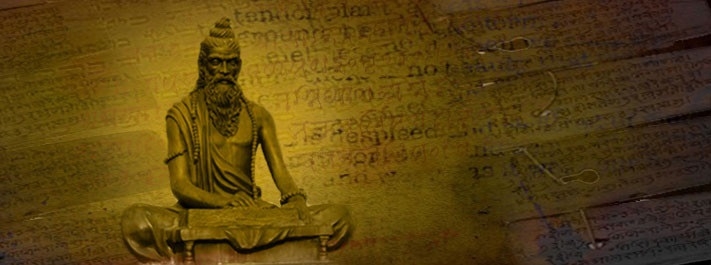Intuitive Discoveries Of Indian Seers
| Date :22-Dec-2024 |

By DR BHUSHAN KUMAR UPADHYAYA :
My thesis of Ph D was
on the phonetics of
the Mahabhashya by
the sage Patanjali. The
Mahabhashya is a very comprehensive commentary on
the aphorisms of the sage
Panini and the grammatical
work of the sage Katyayana
known as Vartikas. It marks a
watershed in the field of linguistics, grammar and philosophy. The philosophy of grammar reached its pinnacle in
the Mahabhashya of Patanjali.
Patanjali is known for popularising the theory of Sphota.
The word Sphota means bursting out. According to this theory, a word has internal and
external dimensions.
The internal dimension is
the meaning which bursts out
through Sphota, an invariant
entity. The external dimension
is the sound which keeps on
changing from person to person. But the meaning remains
the same. The sound may be
loud , slow or medium, but not
the meaning.
In this context
Patanjali has defined what is
the word. Shrotropalabdhir -
buddhinirgrahya- prayogenajwalitah- akashdeshah- shabda— The word is heard by the
ears, understood by the intellect, illuminated by the usage
and exists in the space. It is
one of the most scientific definitions of the word given by
any expert till now. This definition was given by an Indian
sage two thousand five hundred years ago. The most surprising dimension of the definition relates to the proposition about the word existing in
space. It means that word
travels from space to our ears.
Hence, it was known to the
Indian sages in ancient India
that words or sounds exist and
travel in space. The Sphota theory of Patanjali was later
developed more philosophically by Bhartrihari in his treatise
Vakyapadiya. He propounded
that Brahman or the Supreme
Reality is the Word and the
creation burst out .
This
Shabda Brahma theory is like
the Big Bang theory of science. Later it was put forth by
the mystics of India that the
Supreme Consciousness
descended into the material
realm through the word . This
is the reason that Japa or
chanting of holy names has
acquired so much importance.
It is the belief that the consciousness which is trapped
into the material world will
ascend through the ladder of
the word. Thus emerged a full
fledged tradition of Nama Japa.
Its first stage is Vaikhari or loud
chanting.
The second is Upanshu or
just moving the tongue. The
third is Manasika or mental
and the fourth and last stage is
Ajapa. This Ajapa state is mysterious, envisioning
autonomous chanting. It is
also called Anahad or unstruck
sound. Sufis call it Ek Hatha Ki
Tali, clapping of one hand.
It is
a state of consciousness where
duality melts into unity and
there is an unbroken connection of awareness. Seers and
saints are said to have realised
this state in the highest state
of meditation. Quantum
Physics has immense parallels
to these mystical experiences
of saints. In his celebrated
book, The Tao of Physics, Fritjof
Capra has mentioned numerous parallels between modern
physics and eastern mysticism.
He says, Quantum theory thus
reveals a basic oneness in the
universe.

(The writer is Former DG
Police & CG, Homeguards,
Maharashtra)